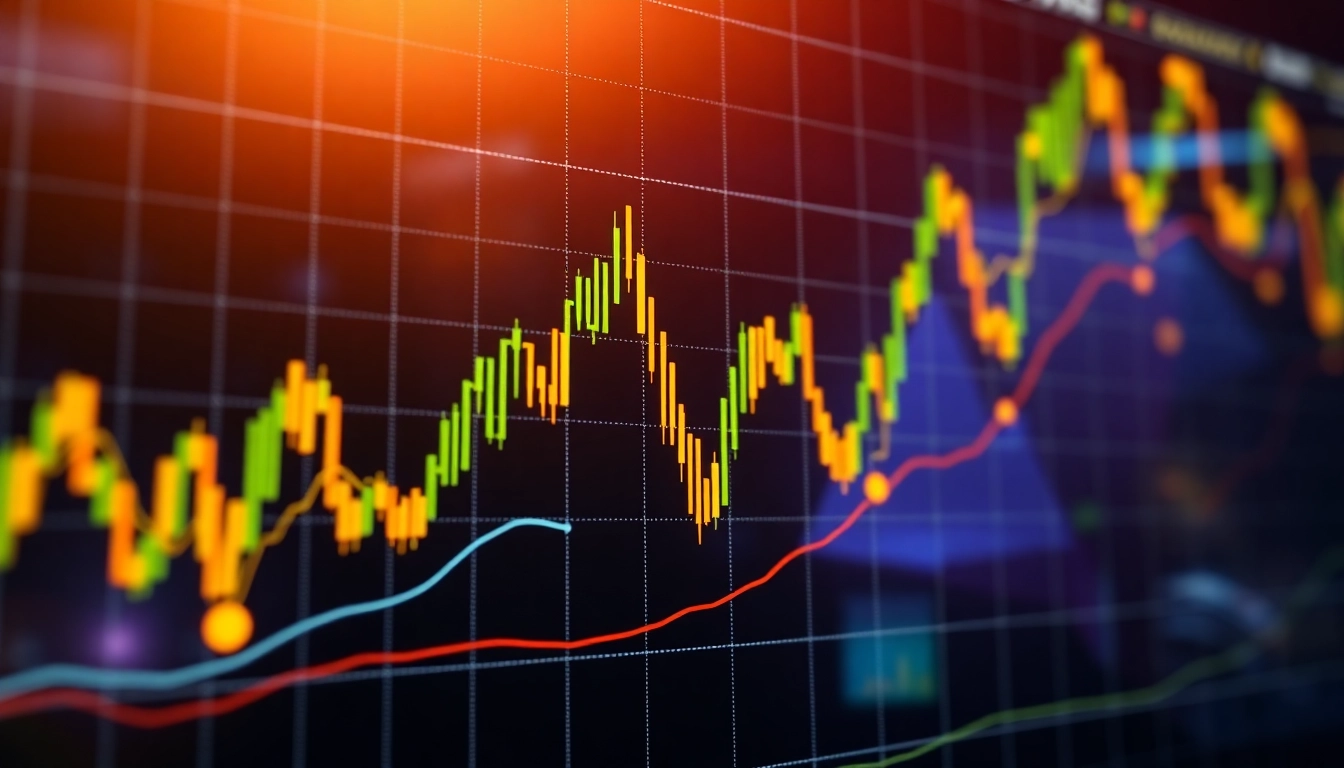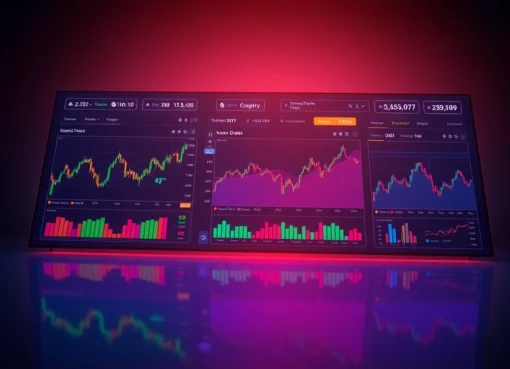Comprehensive Stock Market Updates: Insights to Navigate Today’s Financial Landscape

Understanding Current Stock Market Trends and Fluctuations
The global financial landscape continues to demonstrate its inherent volatility, with recent Stock Market Updates highlighting mixed performances across key markets. Investors are navigating a complex environment shaped by economic indicators, geopolitical developments, and technological innovations. Grasping the nuances of these movements is essential for making informed decisions in both short-term trades and long-term investments.
Analyzing Market Movements and Key Indicators
Current market behavior reveals a pattern of marginal gains in certain regions, such as Europe, where the pan-European STOXX 600 closed up 0.17%, driven by defense stocks and a cautious optimism among traders. Meanwhile, the US stock futures remain steady, reflecting investor anticipation ahead of upcoming U.S. labor data. Key indicators, including the VIX volatility index, moving averages, and technical trendlines like the 200-week moving average for Bitcoin, provide critical insights into potential market direction.
Analyzing these indicators helps traders identify entry and exit points, assess momentum, and detect signs of trend reversals. For instance, market stability often correlates with low volatility and consistent volume, whereas spikes indicate increased uncertainty and potential reversals. Incorporating data from economic reports like employment figures, inflation rates, and manufacturing indexes offers a comprehensive picture of underlying economic health.
Impact of Economic Data on Stock Performance
Economic data releases significantly influence investor sentiment and market trajectories. Recent U.S. labor statistics suggest a resilient economy, but hints of slowing wage growth and employment gains can temper enthusiasm. Such reports often cause the dollar to fluctuate, affecting international trade and corporate earnings.
For example, a robust jobs report might prompt expectations of Fed rate hikes, leading to dollar strengthening and potential declines in commodities like gold and oil. Conversely, weaker-than-expected data may hint at monetary easing, boosting equity markets and risk assets. Understanding this cause-effect relationship enables investors to adjust their portfolios proactively, balancing risk and opportunity accordingly.
Identifying Signs of Market Volatility and Stability
Market volatility tends to spike during geopolitical crises, legislative changes, or unexpected economic data. Symptoms include rapid swings in asset prices, widening bid-ask spreads, and heightened panic selling or buying. Conversely, stability manifests through gradual price movements, tight spreads, and sustained trading volumes.
Monitoring macroeconomic factors, geopolitical news, and sector-specific developments assists investors in gauging current risk levels. For example, the recent drop in the dollar following easing rate expectations reflects a period of relative calm, while persistent geopolitical tensions in regions like Ukraine or the Middle East can signal turbulence ahead.
Gold and Commodities: Records and Market Relations
Current Gold Price Surge and Historical Context
Gold continues to set records, with prices surpassing $3,501 per ounce, climbing past previous peak levels like the $3,500.10 mark recorded in April. This surge is driven by a confluence of factors, including inflation fears, currency fluctuations, and geopolitical uncertainties.
Historically, gold acts as a safe-haven asset during times of economic distress and currency devaluation. Its recent rally underscores investor caution amid global economic tensions, including US inflation data and geopolitical conflicts such as sanctions on Russia and China’s economic slowdown.
Correlation Between Gold and Stock Market Volatility
Although gold often moves inversely to equities, this relationship is nuanced. During periods of heightened stock market volatility, investors tend to flock to gold, seeking stability. Conversely, when markets stabilize, gold’s allure diminishes, and prices may moderate.
For instance, the recent dip in stock markets globally and persistent US inflation fears have contributed to gold’s record high. Investors should monitor the price action and macroeconomic indicators to understand whether gold’s trend is sustainable or temporary.
Impact of Commodities on Global Market Sentiment
Commodities like oil, iron ore, and metals serve as barometers of economic activity. Rising oil prices, for example, reflect supply constraints or geopolitical tensions but can increase costs for industries, leading to inflationary pressures that influence central bank policies.
Currently, oil prices are experiencing a slight dip, yet the market anticipates weekly gains, indicating a cautious optimism tied to US and Chinese economic data. Weakening Chinese manufacturing, reflected in subdued iron ore futures, signals potential slowdown in construction and industrial activity, which impacts commodity prices and investor sentiment globally.
Global Stock Markets: Regional Performance and Influences
European, Asian, and US Market Recaps
European markets have shown resilience with marginal gains, supported by defense stocks and stable economic indicators. The STOXX 600 closed slightly higher, reflecting investor confidence amid cautious economic outlooks.
Asian equities, including Japan’s Nikkei, have extended gains, buoyed by hopes of US rate cuts and China’s stimulus measures. Meanwhile, US stock futures remain steady as traders assess conflicting signals from economic data and geopolitical risks.
Factors Driving Regional Stock Performance
Regional variations in performance stem from diverse influences, including monetary policy, fiscal stimulus, geopolitical stability, and sector-specific developments. Europe’s marginal gain is partly due to resilient defense and industrial stocks, while Asia benefits from China’s easing measures. The US remains sensitive to Fed policy signals and employment data, affecting investor risk appetite.
Strategies for Investors in Diverse Markets
To navigate regional differences, investors should diversify across sectors and geographies, employ hedging strategies, and stay aligned with macroeconomic trends. For example, increasing allocations to defensive sectors like healthcare and utilities can cushion against volatility, while cyclical sectors may present growth opportunities in bullish environments.
Trading News and Policy Updates Affecting Stocks
Latest Central Bank Moves and Interest Rate Hints
Central banks worldwide are adopting cautious stances amid inflation concerns. The Federal Reserve’s signals toward potential rate cuts aim to stimulate growth, while the Bank of England has warned Facebook of strict conditions regarding Libra’s UK launch, indicating regulatory tightening in the fintech space.
Legislative and Regulatory Impacts on Trading
Recent legislation, including SEC actions against platforms like Coinbase and MicroStrategy’s Bitcoin acquisitions, influence market sentiment toward cryptocurrencies and digital assets. Regulatory clarity remains a crucial factor for institutional adoption and market stability.
Emerging Technologies and Their Influence on Stocks
Technological innovations, including AI integration at firms like Meta and advancements in blockchain, continue to disrupt traditional sectors. Companies leveraging these technologies are often rewarded with increased investor interest, fostering growth in the tech and fintech spaces.
Practical Tips for Investors and Traders
Deciphering Market Signals and News
Successful trading hinges on interpreting news flows, technical signals, and macroeconomic data accurately. Regularly tracking economic calendars, analyst reports, and market sentiment indicators helps anticipate moves and adapt strategies proactively.
Effective Risk Management Techniques
Implementing stop-loss orders, position sizing, and hedging reduces exposure to adverse movements. Diversification across asset classes, sectors, and geographies further mitigates systemic risks inherent in volatile markets.
Long-term vs. Short-term Investment Strategies
Long-term investors benefit from focusing on fundamentals and resilience, while traders seek quick gains through technical setups and macroeconomic catalysts. Combining both approaches, tailored to individual risk appetite, can optimize portfolio performance.


